
The Moorish heritage is evident in the many walled gardens in Córdoba and the numerals
Spain 2001
Córdoba
 |
The Moorish heritage is evident in the many walled gardens in Córdoba and the numerals |
| Córdoba was founded by the Romans in 152 BC in a very Roman high fashion sense. A city they considered a center of Roman culture. However, by the 5th Century the Roman Empire had fallen and the Romans abandoned Córdoba, and Vandals and Visigoths moved in. 100 years after Islam took North Africa by storm. Around 700 the Muslims led by the surviving leader of the once very prominent , but now disgraced Umayad family had conquered most of Iberia and Al-Rahman made Córdoba the seat of the Muslim government. There was strife between various Muslim groups, by and large the Muslim-run Iberia thrived and science, the arts, and philosophy advanced there, while Europe descended into the Dark Ages, losing much of their former edge. In fact the Arabs were the bridge between the ancient knowledge of the Greeks and the finally re-emerging Europe. In the Roman tower on one of the Roman bridge there is a museum that shows the philosophers and scholars of both Muslim and Christian faith freely exchanging information. I recall seeing downtown in Córdoba a bust dedicated to the first eye surgeon in the world that is dated around 1100 AD. Karl the Great, aka, Charlesmagne had some treaties in place with the Muslims on his western border, i.e. Spain/Iberia. When the Muslim Empire began to decline, the Christians were on the rise and intent on getting the Arabs out of Spain. In 1236 Córdoba was taken by Christian knights, and by 1400 no Muslims remained in Spain. There was little peace in Muslim Iberia, where endless strife between factions and a tightening of the grip of more conservative leaning Mullahs that caused the loss of countless documents and destruction of historical sites. |
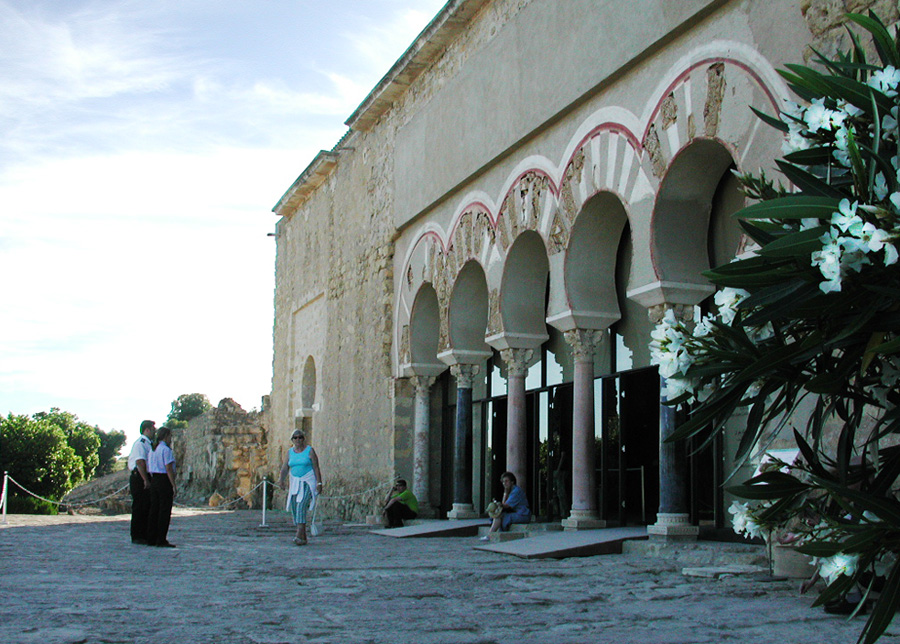 |
On the flight over from Paris I read in the French in-flight magazine of this one-time Umayad exhibit. |
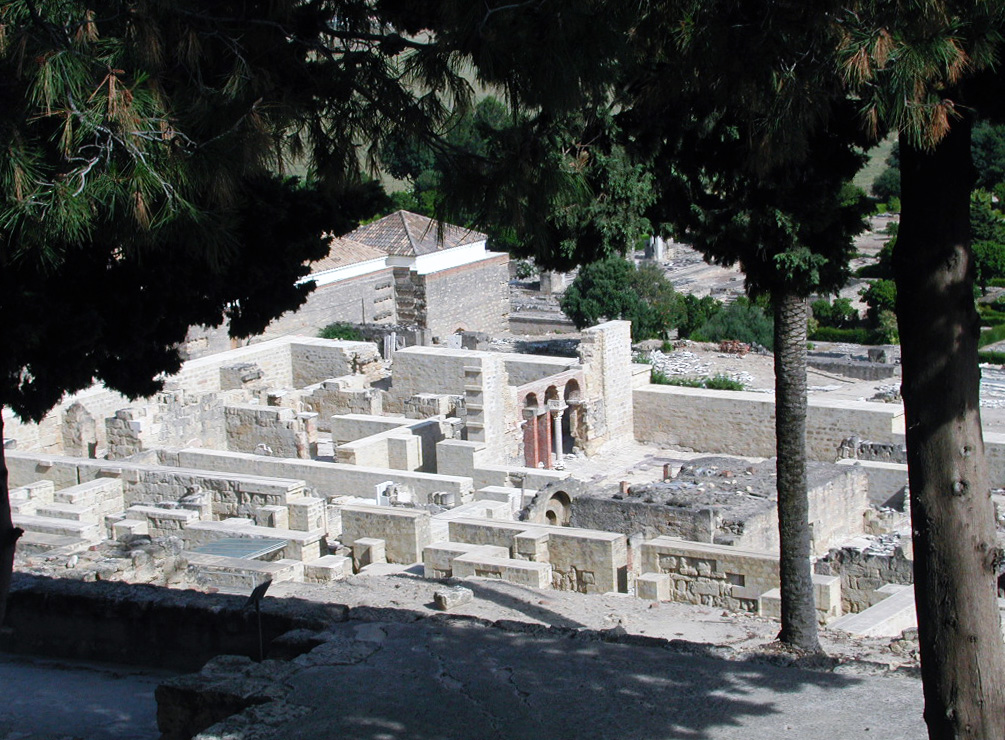 |
The Umayad palace ruin was readily accessible by bus, and in the central musum building all manner of Umayad items were on display |
 |
On 'display' also was this Spanish model and her mom |
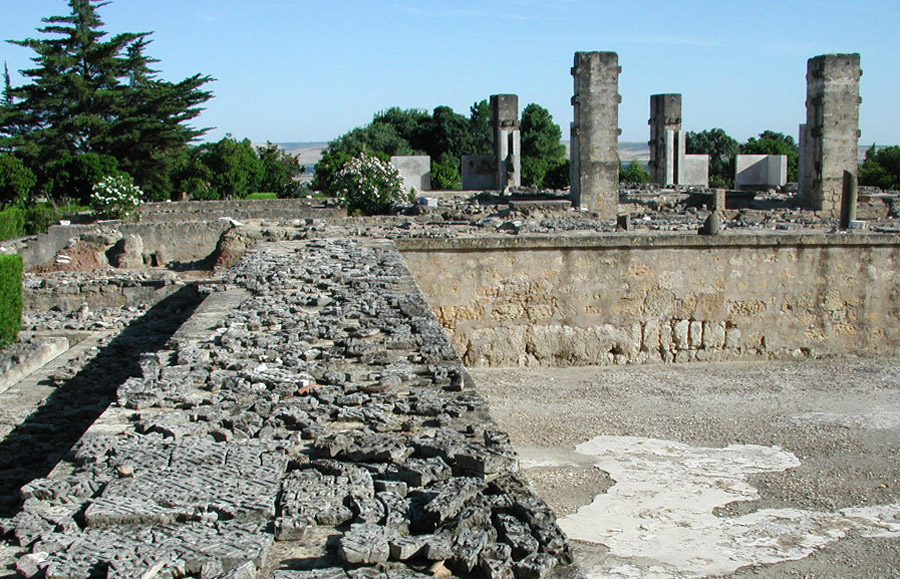 |
I don't remember if this was a pool or decorative water filled space |
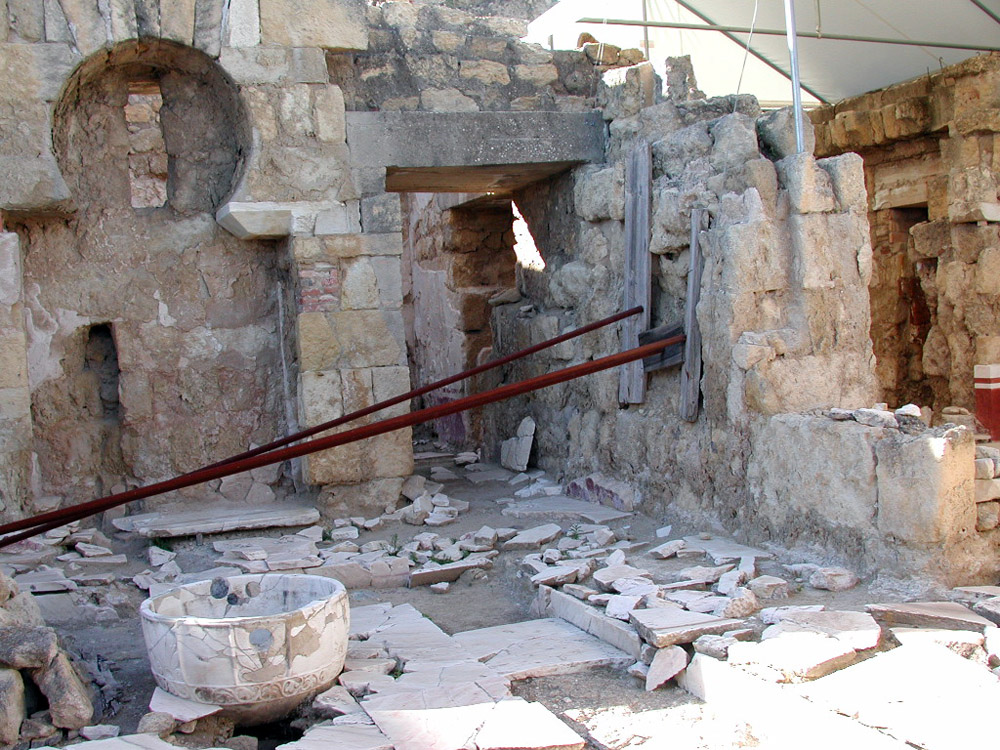 |
One of the palace ruin rooms |
 |
And this is one of the foreign visitors who arrived on the same bus from Córdoba |
The Córdoba Mezquita
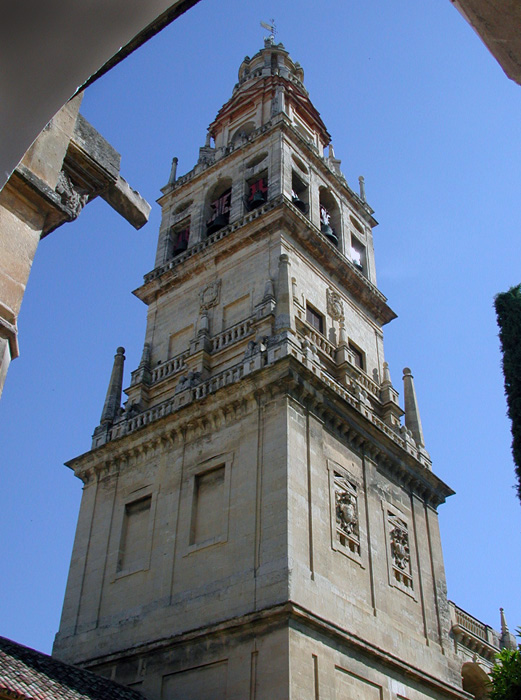 |
I was ill prepared for what Córdoba had to offer |
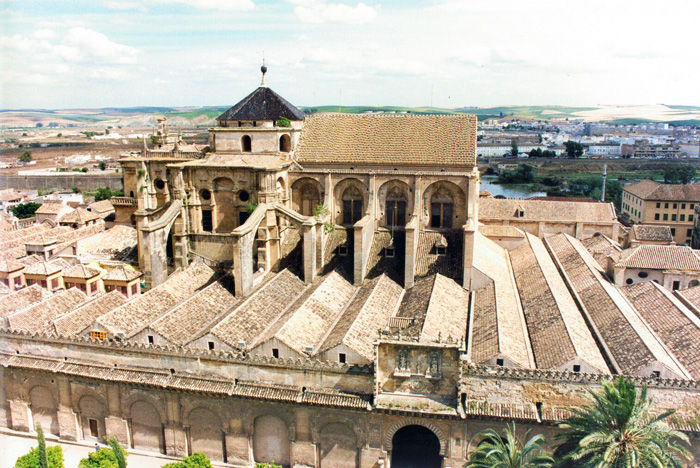 |
The Mezquita is the real treasure of Córdoba, in my opinion |
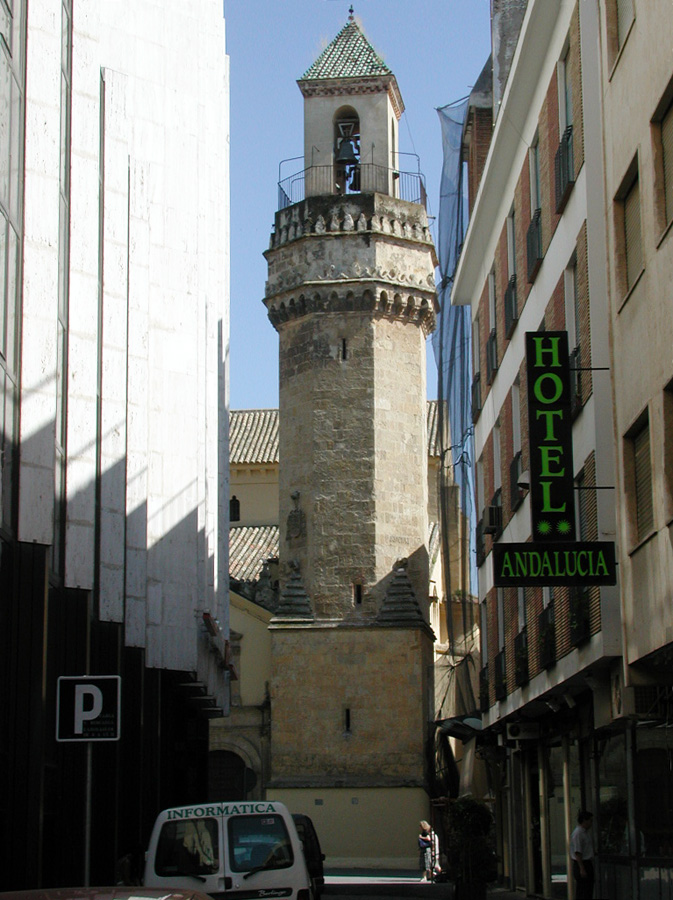 |
 |
There are traces of the Muslim past everywhere, such as this minaret, now a church tower |
Nothing beats the Mezquita, here a side entrance, the Puerta O3 |
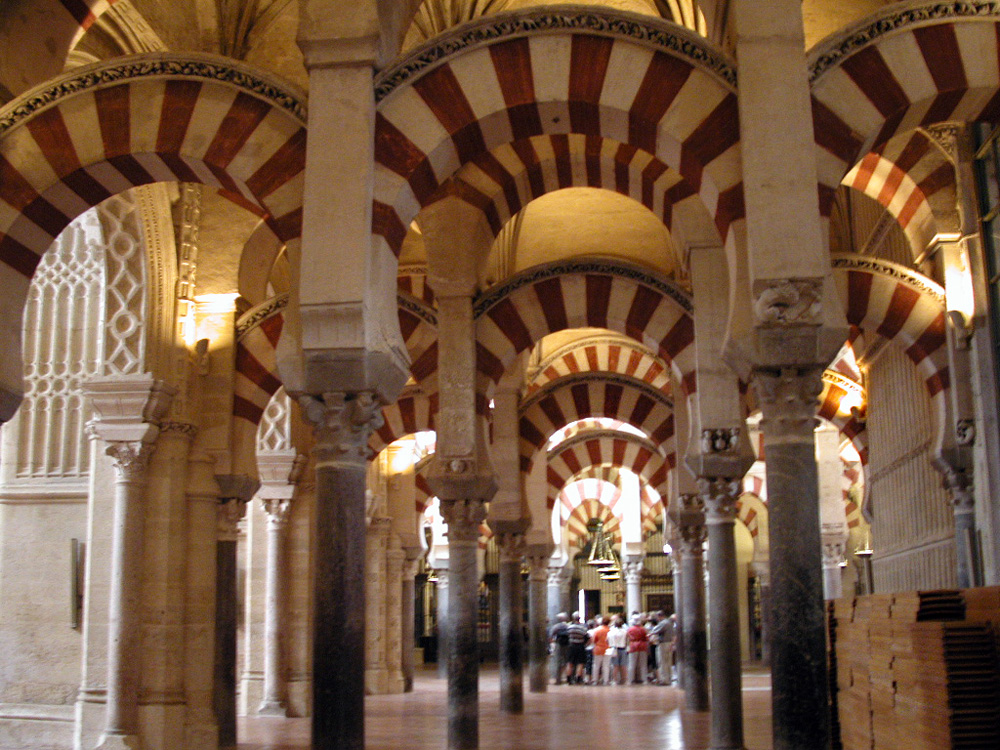 |
I was totally delighted by what I found inside |
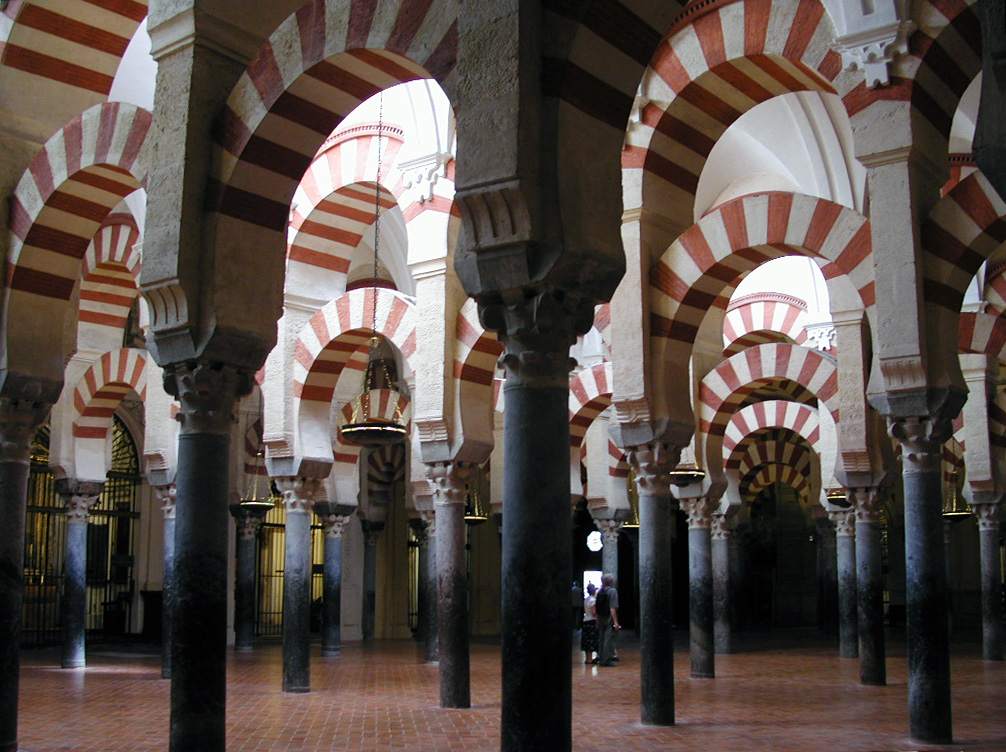 |
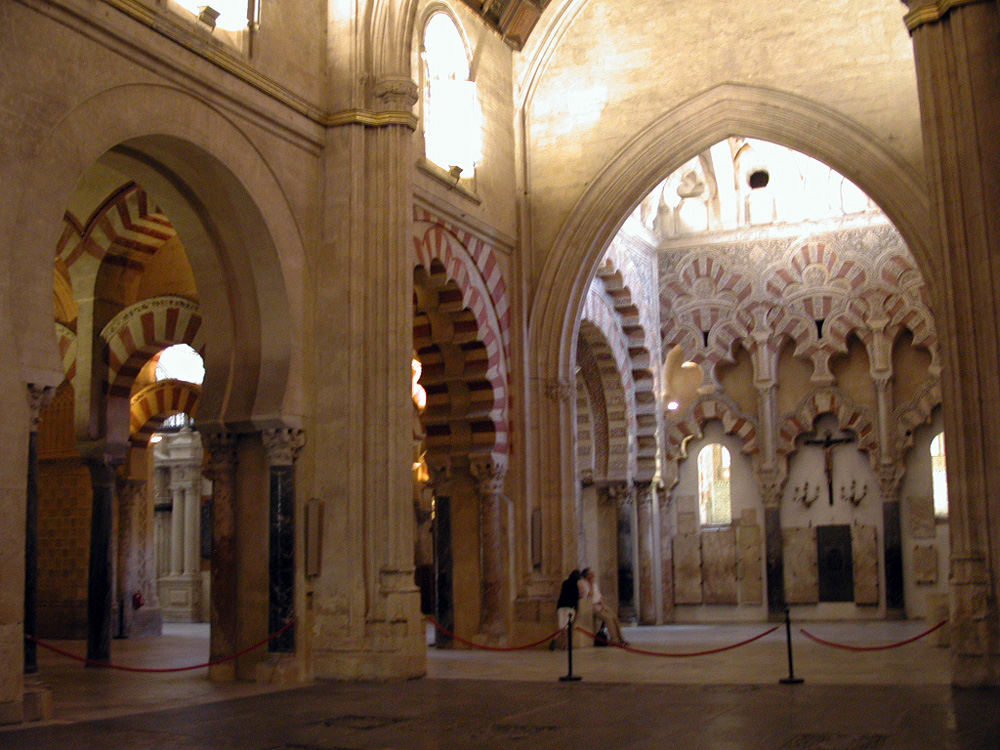 |
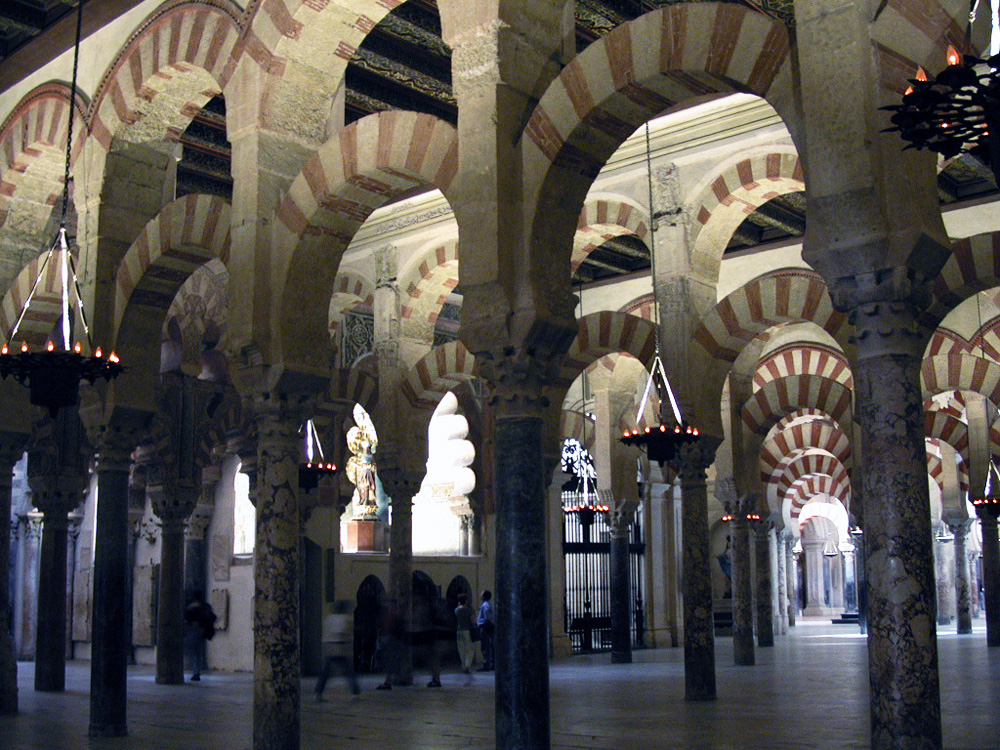 |
Since childhood had I seen pictures of these arches and always thought, 'Alhambra', never Córdoba |
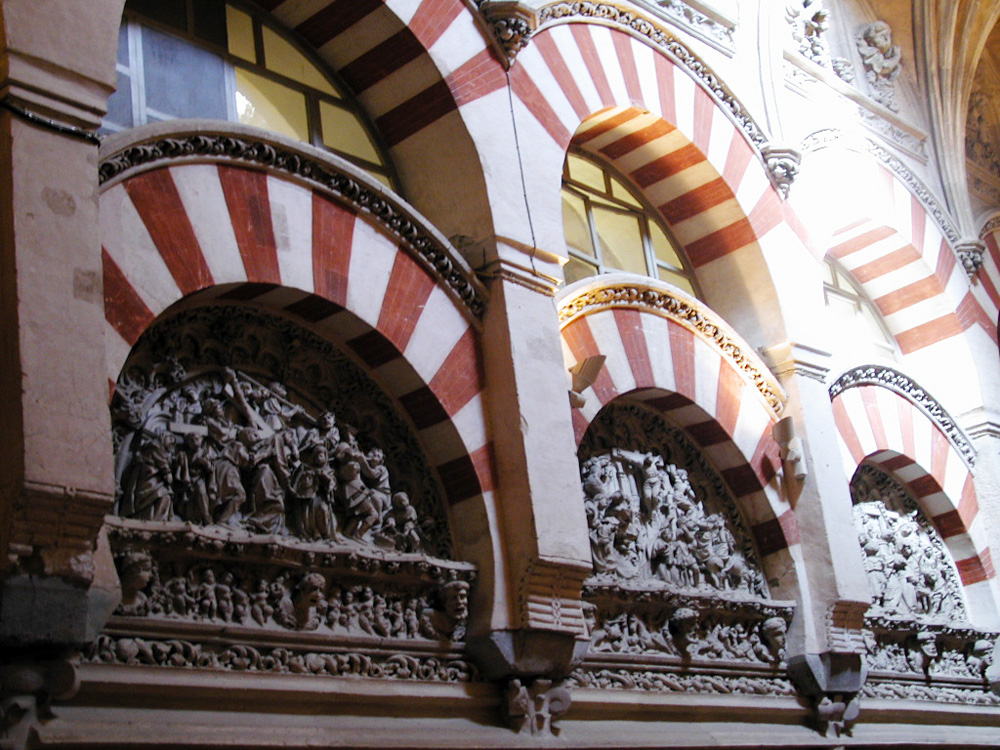 |
Then, walking around I suddenly heard organ music - definitely Christian |
 |
It brought me here, to this ornate medieval, Gothic style cathedral, in the center of the huge mosque |
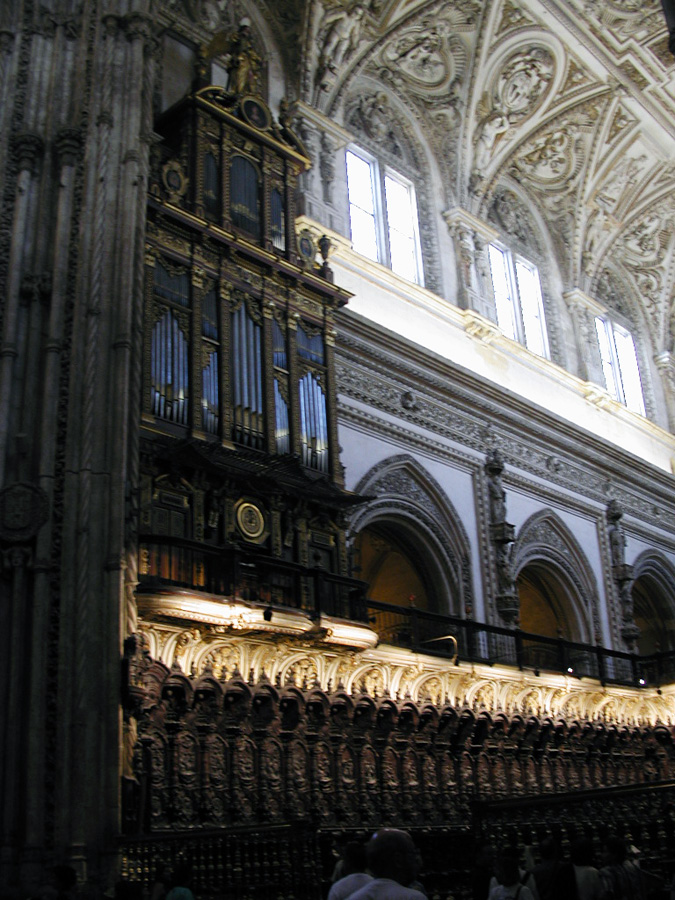 |
When Charles V, Holy Roman Emperor and also first king of Spain, who had permitted the construction of this cathedral, was shown the final product, he said that this converted a truely unique and beautiful building to one that one can see in every city in Europe. He was not impressed, and I think he was correct. |
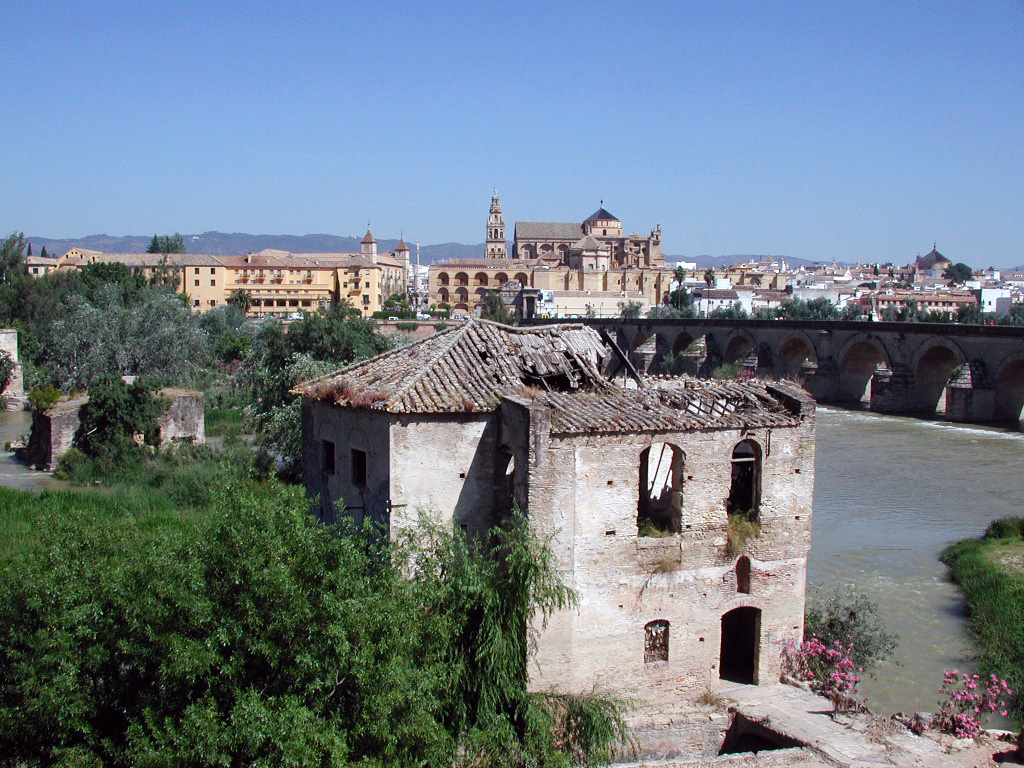 |
This shows the Roman Bridge and the Mezquita in the background, dominating the Córdoba skyline |
 |
Another view from the far side of the river, with the Roman tower, probably once part of a gate complex, in the foreground. There is a very nice museum in that tower. It is definitely Roman. I showed the curator the Roman brickwork at the waterline as evidence. He had not noticed that. |